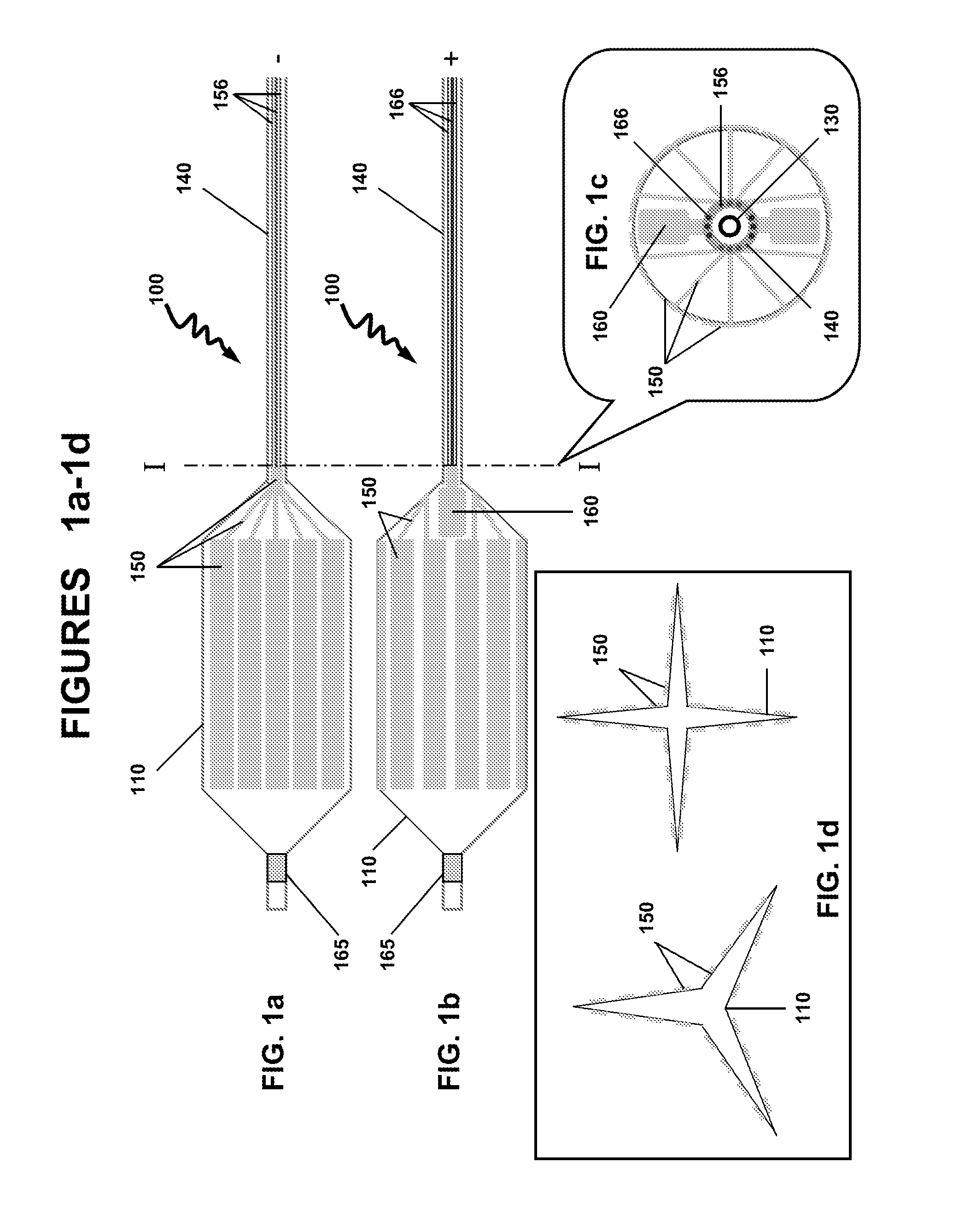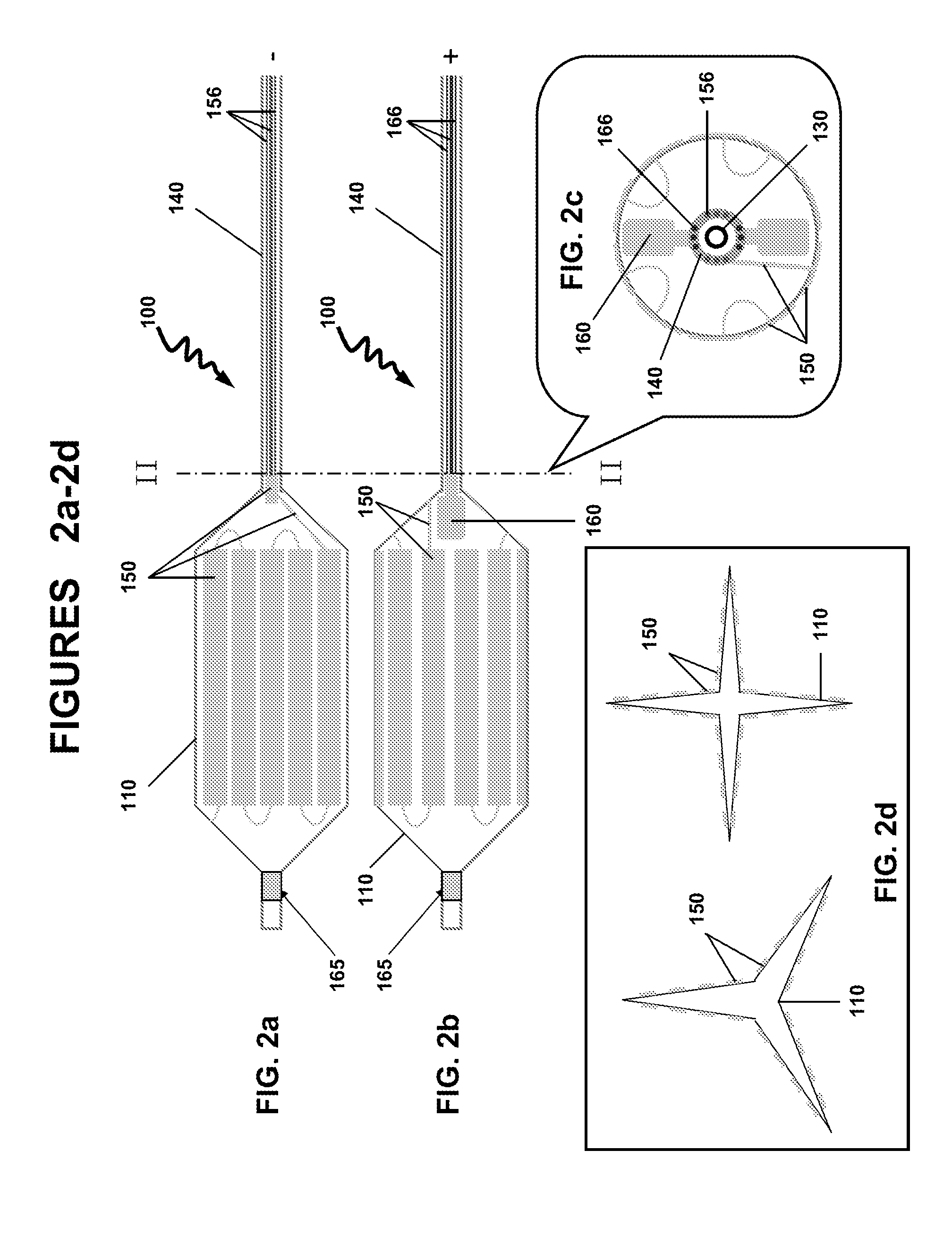[0010]In a particular variation of the above, the hydrophobic fragment and the hydrophilic fragment is —[—(C5-18alkylenyl)m-L-(CH2CH2O)n—]p—, wherein L is a linker selected from the group consisting of —C(O)O—, —C(O)NH—, —OC(O)O—, —OC(S)O—, —OC(O)NH—, —NR1C(O)O—, —SC(O)O—, —SC(O)S—, —NR1C(NR1)O— and —NR1C(O)NR1—, wherein each R1 is independently H or C1-3alkyl, and where m is 1, 2 or 3, n is 1 to 90, and p is 1 to 10. In a particular variation of the above device, the biologically active agent is selected from the group consisting of a carcinostatic, an immunosuppressive, an antihyperlipidemic, an ACE inhibitor, a calcium antagonist, an integrin inhibitor, an antiallergic, an antioxidant, a GPIIb/IIIa antagonist, retinoid, flavonoid, carotenoid, a lipid improvement agent, a DNA synthesis inhibitor, a tyrosine kinase inhibitor, an antiplatelet, a vascular smooth muscle antiproliferative agent, an anti-inflammatory agent, a biological material, an interferon and a NO production accelerator. In one aspect, the biologically active agents are substantially water soluble agents or water soluble drugs. The biologically active agents may include antithrombotics, antiproliferatives, anti-inflammatory agents, smooth muscle cell migration inhibitors and restenosis-reducing agents. Particular biologically active agents include paclitaxel, sirolimus, simvastatin and rapamycin. In certain aspects, the total load of the biologically active agents may be about 1-1,000 μg, 1-250 μg, 1-100 μg, 1-50 μg, 1-25 μg, 1-10 μg or about 5 μg, the dose of which depends on the nature and biological activity of the agents. The calculation of the dosages are previously known to one skilled in the art. In another variation of the above device, the dilating member is a self-expandable scaffold or a shape memory scaffold. In one variation, the dilating member is circumferentially loaded with a continuous gold layer. In another variation, the dilating member is partially loaded with a continuous gold layer. In a particular variation of the above device, the dilating member is a balloon and the gold surface layer comprises discontinuous rectangle-shaped gold layers. In yet another variation, the dilating member is a balloon and the gold surface layer comprises discontinuous wave-shaped gold layers.
[0011]In another embodiment, there is provided a method for the controlled delivery of a biologically active agent to an intraluminal surface using a drug delivery device, wherein the device comprises: an elongated insertion member having a proximal end and a distal end; a dilating member comprising a proximal end and a distal end, and an inner surface and an outer surface, wherein the proximal end of the dilating member is attached to the distal end of the elongated insertion member, and wherein a part of the surface of the dilating member is coated with a gold surface layer; a biodegradable substrate comprising the biologically active agent, wherein the substrate is covalently bonded to the gold surface layer by a gold-sulfur (Au—S—) bond; an electrical lead having a first end and a second end, the first end connected to the gold surface layer, wherein the electrical lead is configured to pass an electrical current to the gold surface layer; and wherein the controlled delivery and release of the substrate comprising the biologically active agent is initiated by a electrical current reduction and cleavage of the Au—S bond; the method comprises inserting the device into the lumen and advancing the device until the dilating member is in a desired region of the intraluminal surface; expanding the dilating member to contact the outer surface of the dilating member with the vessel wall; and passing an electrical current to the electrical lead sufficient to reduce and cleave the Au—S bond and releasing the biodegradable substrate comprising the biologically active agent over a controlled time period. In one aspect, the controlled time period is between 0.1 and 120 seconds, or between 5 and 30 seconds, between 10 and 20 seconds, or between 1 and 10 seconds, between 1 and 20 seconds, between 1 and 30 seconds, or between 30 and 60 seconds, between 40 and 60 seconds or between 50 and 60 seconds. In one aspect, the release of the substrate comprising the biologically active agent from the device may be performed at low electrical currents. The electrical current are generated at biologically safe levels. The release of the substrate may be performed using electrochemically programmed methods to release the agent at the desired levels, rate. The release of the substrate may be programmed to provide the biological agent at the desired concentrations. The programmed release of the substrate from the gold surface may be biased at about −1.5 V (vs. Ag/AgCl) f...
 Login to View More
Login to View More 


